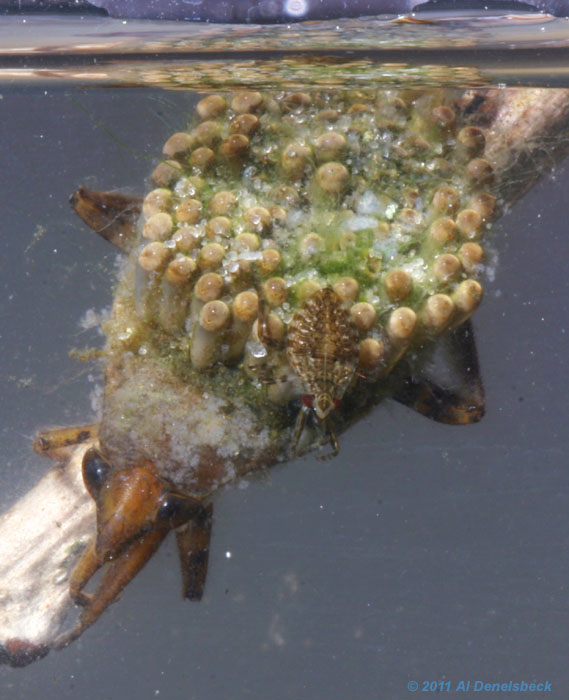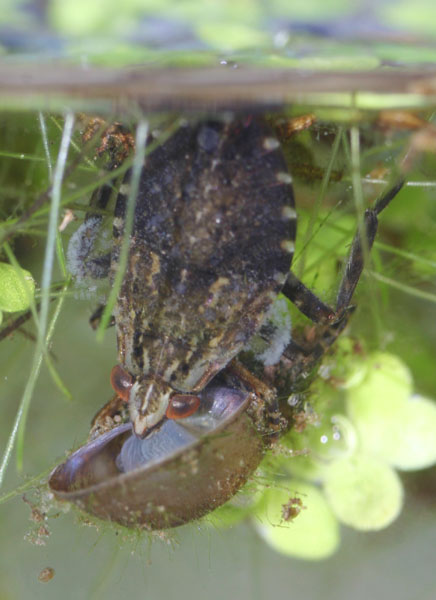[Both] Canon 300D, tripod
Metz 40MZ-3i flash off-camera
ISO 100
[Top] Vivitar bellows
Vivitar 135mm 2.8
1/100 second, f22
[Bottom] Mamiya 80mm macro w/ extension
1/80 second, f16



 The larger species can be seen to capture minnows, but even the smaller ones vie for the title of apex predator, and seem to tackle a lot of food sources I never would have suspected – this little specimen is dining on a snail (for an idea of scale, that's duckweed in the background.) Unlike many of the other aquatic subjects I've tackled, water bugs are remarkably easy since they'll hold still at the surface for long periods of time and can even be nudged closer to the aquarium's glass. Even when spooked, they'll swim frantically around for only a minute before picking a nice spot to pose again, much like adult dragonflies. You have to appreciate such cooperation.
The larger species can be seen to capture minnows, but even the smaller ones vie for the title of apex predator, and seem to tackle a lot of food sources I never would have suspected – this little specimen is dining on a snail (for an idea of scale, that's duckweed in the background.) Unlike many of the other aquatic subjects I've tackled, water bugs are remarkably easy since they'll hold still at the surface for long periods of time and can even be nudged closer to the aquarium's glass. Even when spooked, they'll swim frantically around for only a minute before picking a nice spot to pose again, much like adult dragonflies. You have to appreciate such cooperation.